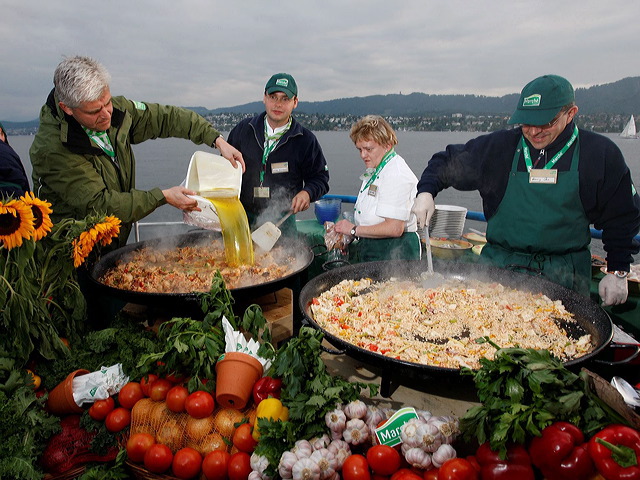During summer, a period notoriously known for its lack of news, the media seem to have been very busy reporting and analysing a steady news stream predicting their own demise. We have seen headlines such as ‘Not dead yet’ or ‘Thinking the unthinkable’ the latter referring to a possible scenario in a not too distant future where the New York Times is no longer published — not on paper at least.
If you have not followed the discussion the crux of the matter is very well summed up in the following video clip:
| The Daily Show With Jon Stewart | Mon – Thurs 11p / 10c | |||
| End Times | ||||
|
||||
My point here is not so much to enter into the discussion — to me the conclusion is inevitable — but to point out the fact that once again an industry has been caught out by the famous frog syndrome.
( if you drop a frog into a very hot water it will do its very best to scramble and get out, if however you put it in a pot of cold water and heat the pot slowly, the frog will not try to get out before it’s too late ) i.e. not responding to gradual changes in your environment. The situation in which print media finds itself today was predicted five if not 10 years ago. They just all hoped that the pot would not get too hot. In 10 years time this will be a classic business school case in line with the one about the buggy whip manufacturers, typesetting and landline telephones.
So how does that relate to the world of hotels, travel and conference centres? Well – I think there is a similar shift taking place in our environment. Well possibly not directly in our own environment but in the environment that provides us with our business.
There are three key drivers of this shift: The financial crisis, energy/co2 awareness and Web 2.0 together they have inspired a growing number of business leaders to rethink the need for travel and face-to-face meetings.
IKEA a trendsetting company is running an internal campaign under the banner of: Meet more – travel less. Encouraging the use of interactive web technology for meeting purposes while at the same time reducing travel costs and CO2 emissions. The target for 2009 is to reduce travel by 50 percent and CO2 emission as a consequence by 25 percent. And they are not the only ones, they are just very visible in the way they do it.
It makes sense. Cramming 20, 50 or 500 people into a conference room and feeding them an endless parade of PowerPoint slides, be they ever so pretty and well-designed is not efficient knowledge transfer, (let alone learning) We know that.
Ah but wait – I hear you say – what about the networking? That is the truly important part of meetings – it may be important, but traveling 4 or 6 hours, spending 2 days away from the job and then taking a chance on who you share the stand-up coffee table with during a 10 minute break is not efficient networking.
You could spend an hour systematically working LinkdIn, Facebook or even Twitter and you would probably produce some far more interesting connections and possibilities. So lets not kid ourselves about the networking.
And there is a fourth driver adding to this:
“During the next 5-10 years, the Millennium generation will become a signi?cant proportion of meeting participants. This is perhaps the largest generation gap in history and the consequences for meetings will be fundamental. If meetings for the older generations serve the purposes of information and networking, this means online communities, such as Facebook and MySpace to the younger generations, and they learn from Google, Wikipedia and online peers more than parents, teachers
and conference speakers. They don’t see the difference between virtual and real any more than they see why work and play should not happen at the same time. ” From The Meeting Manifesto
But it is not just meeting planers who are shifting their focus to ROI – the other sector where we can see a shift is taking place as well is within the training industry. Traditional training companies are also in the hot pot if they still believe in classrooms and PowerPoint’.
“Learning budgets are decreasing. Spending on external services are decreasing even more. And learning departments need to do more with fewer resources.
If you are inside a corporate learning department, assuming you still have your job, then you feel this by being more busy. In many ways, that’s not a bad feeling compared to either the person who lost their job. Or the people who have seen their learning business crushed by this”
Read more here
So two major purchasers of hotel rooms, F&B and meeting space, the meeting organizers and the training companies are in this shifting paradigm. Looking for new solutions and ways to connect but with out the travel. What was once a considered a perk – is now almost a curse.
Meetings and tourism are now two different worlds.
Tourism is all about pleasure and experiences which is fine, but meetings/training are business and business means somebody is looking for a return on investment. If there is no ROI or if it is too low, meetings (gatherings/trainings etc) in their current form will be cut.
That is what is happening in the market just now.
And if you think that once the so-called crisis is over then everything will be back to normal and we can do business as usual then and you have just joined all those very uncomfortable newspapermen in their very hot pot.
—-
If you would like to pursue this subject here are a few links that you may find interesting:
European Event ROI Making Meetings and Events More Profitable.
The Meeting Architecture Manifesto

